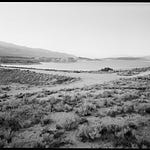It is a great pleasure to welcome three men from the Massachusetts Institute of Technology who are going to help me with a mystery, which is the mystery of the main asteroid belt.
Every once in a while, you read about the possibility of an asteroid plunging into Earth, as has happened many times before in the history of our planet.
The question is, will we be hit by something we see coming? Or will it come out of nowhere? And by the way, how do we know where the asteroids are and where they're going to be? What tells us? How do we ascertain that data?
There is right now underway the building of a new telescope in Chile, the Vera Rubin telescope, that will be mapping the whole sky constantly and that is said to be a great boost for planetary defense. There is also a planned probe by NASA, NEO Surveyor, that's going to look for near-Earth objects.
However, we have a new kid on the block, and these gentlemen are going to help introduce how it is that they came to publish in Nature: “JWST sighting of decametre main-belt asteroids and view on meteorite sources”—there's the breakthrough.
What is it these scientists are looking for when they're looking small, and why?
Watch the interview above, or listen to an audio version below:
LINKS:
“JWST sighting of decametre main-belt asteroids and view on meteorite sources,” Nature
The opinions expressed on this website and on The John Batchelor Show are those of John Batchelor and guests, and not those of CBS News.











